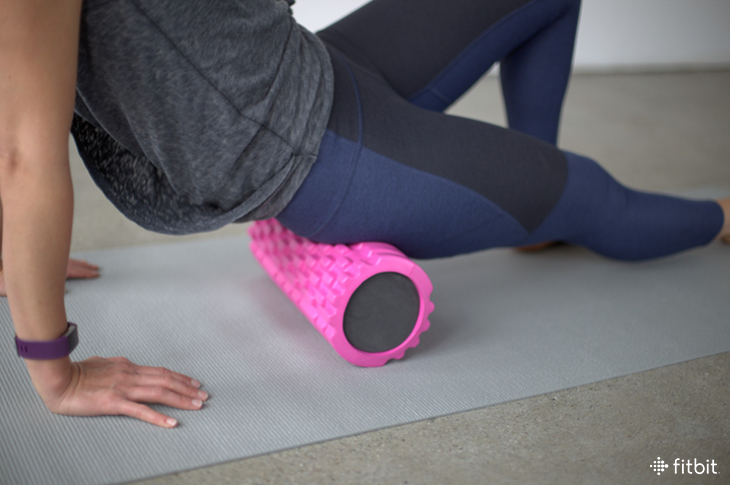 It’s likely to be the thing that falls towards the bottom of your must-do exercise list: getting deep into that post-workout stretch. But runners, walkers, coaches, and physical therapists often tell you to foam roll for good reason: Rolling can take down next-day (and day-after-that) muscle soreness, and it can boost your range of motion.
It’s likely to be the thing that falls towards the bottom of your must-do exercise list: getting deep into that post-workout stretch. But runners, walkers, coaches, and physical therapists often tell you to foam roll for good reason: Rolling can take down next-day (and day-after-that) muscle soreness, and it can boost your range of motion.
This is good motivation to get mobile, so you dust off your foam roller, glide over it, and declare yourself done, right? Wrong. While there’s nothing wrong with a quick rolling pass, unleashing the full power of foam rolling can make the time you put in more effective—and help you reap benefits that extend beyond fitness. Make your foam rolling time really count by implementing these latest findings into your practice.
1. Get rolling before you get rolling (and after, too)
You got up, got dressed, and now you’re ready to get out there. Your muscles? Maybe not so much. A short visit with the foam roller before you begin can increase the “visco-elasticity” of your muscles by creating a little heat, explains David Behm, Ph.D., university research professor in the School of Human Kinetics and Recreation at Memorial University of Newfoundland. “Foam rolling makes the fluid in your muscles becomes less viscous,” he says. He offers up an analogy: “If the fluid started off as molasses, foam rolling turns it to water, making it easier for you to use the muscle.” It also helps your range of motion without any decrease in performance.
After your training session, roll again. That post-workout roll helps ward off what scientists call delayed onset muscle soreness (and you call “yikes”) and the performance impairments that can come with it.
2. Go light
Fortunately, no pain, no gain doesn’t apply to foam rolling. If your reason for avoiding the roller is the intense pain that comes with high pressure, you’ll appreciate learning you can get the same results with much lighter pressure. A new study by Behm’s team found that rolling at a pressure that was a 5 out of 10 on a pain scale gave people just as many benefits as pushing the pressure to an intensity of 7 or 9 out of 10. Their range of motion increased just as much and muscle performance didn’t change. The big difference between the groups: How much pain the participants felt.
3. Roll the opposite side
If a muscle—suppose it’s your right calf—is sore and it hurts to roll it, foam roll the left one. Really. Research shows this offers relief in the tender parts of the opposite calf. But here’s the trick: This is one case where you might have to go at rolling a little harder because you need to create enough sensation to compete with the discomfort on the other side. One theory on why it works: “You’re increasing the inhibition of pain throughout your body,” Behm says. In other words, “If you banged your toe, it would hurt less if you started banging your head against the wall.” Another theory, he says, is that you’re sending more sensory signals to your spinal cord, and they’re causing a traffic jam that blocks pain signals. It’s the same thing that happens when you rub your elbow after hitting it on a table—you counter one sensation with another so the unpleasant one doesn’t feel so bad.
4. Bend and straighten the nearby joint
While you’re rolling your calf, flex and point your foot or do ankle circles. If you’re rolling your quads, gently bend and straighten the knee. While research isn’t unanimous that it’s essential, doing it may at least keep you engaged with rolling long enough to get benefits. Five to 10 seconds of rolling is enough to do a little something for you, but 20 to 30 seconds per muscle group is better.
This information is for educational purposes only and is not intended as a substitute for medical diagnosis or treatment. You should not use this information to diagnose or treat a health problem or condition. Always check with your doctor before changing your diet, altering your sleep habits, taking supplements, or starting a new fitness routine.

If you have questions about a Fitbit tracker, product availability, or the status of your order, contact our Support Team or search the Fitbit Community for answers.
Please note: Comments are moderated and may not appear immediately after submission.